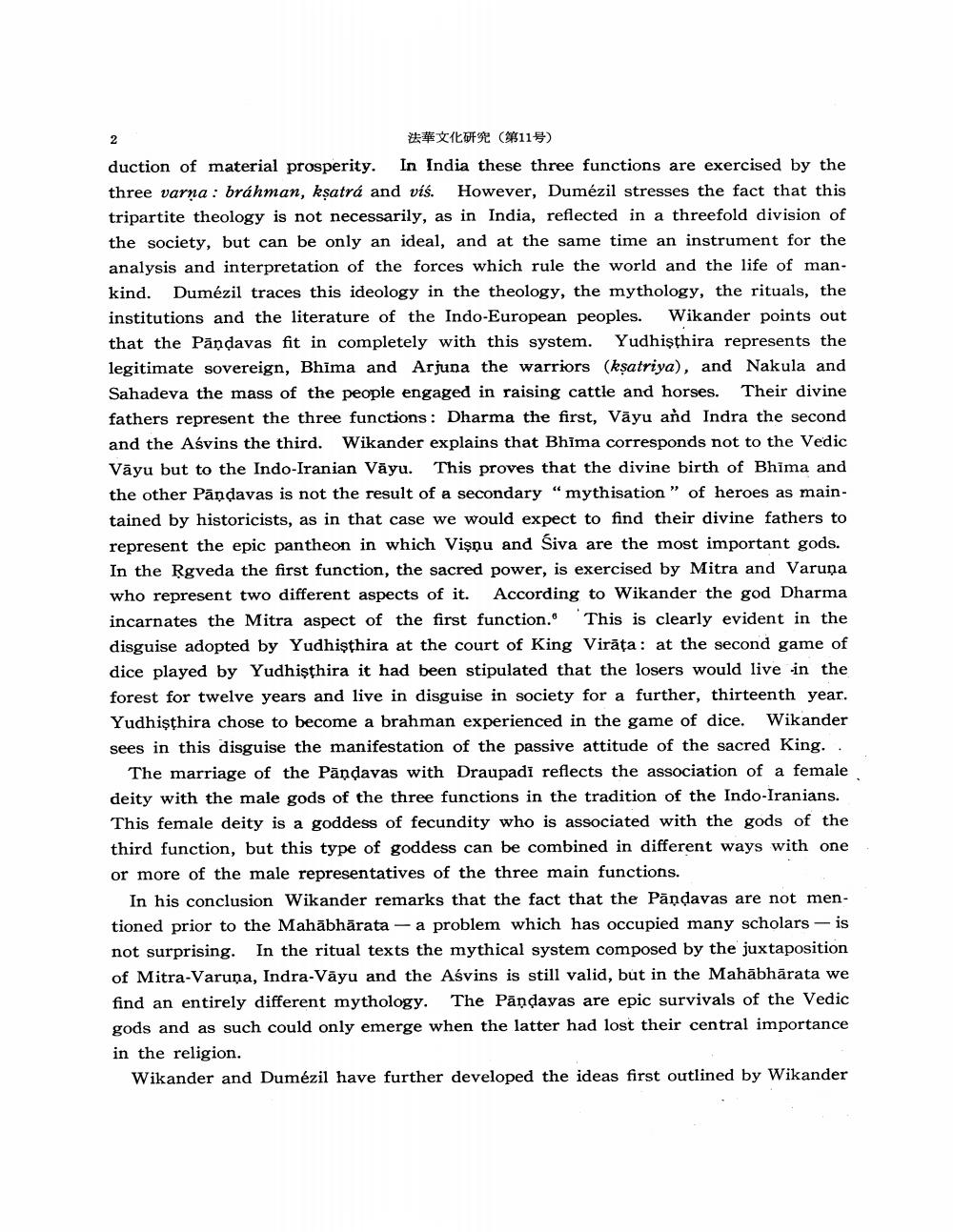Book Title: Study Of Mahabharata Author(s): J W De Jong Publisher: J W De Jong View full book textPage 2
________________ 法華文化研究(第11号) In India these three functions are exercised by the duction of material prosperity. three varna: bráhman, kṣatrá and viś. However, Dumézil stresses the fact that this tripartite theology is not necessarily, as in India, reflected in a threefold division of the society, but can be only an ideal, and at the same time an instrument for the analysis and interpretation of the forces which rule the world and the life of mankind. Dumézil traces this ideology in the theology, the mythology, the rituals, the institutions and the literature of the Indo-European peoples. Wikander points out that the Pandavas fit in completely with this system. Yudhisthira represents the legitimate sovereign, Bhima and Arjuna the warriors (kṣatriya), and Nakula and Sahadeva the mass of the people engaged in raising cattle and horses. Their divine fathers represent the three functions: Dharma the first, Vayu and Indra the second and the Asvins the third. Wikander explains that Bhima corresponds not to the Vedic Vayu but to the Indo-Iranian Vayu. This proves that the divine birth of Bhima and the other Pandavas is not the result of a secondary "mythisation" of heroes as maintained by historicists, as in that case we would expect to find their divine fathers to represent the epic pantheon in which Visnu and Siva are the most important gods. In the Rgveda the first function, the sacred power, is exercised by Mitra and Varuna who represent two different aspects of it. According to Wikander the god Dharma incarnates the Mitra aspect of the first function." This is clearly evident in the disguise adopted by Yudhisthira at the court of King Virața: at the second game of dice played by Yudhisthira it had been stipulated that the losers would live in the forest for twelve years and live in disguise in society for a further, thirteenth year. Yudhisthira chose to become a brahman experienced in the game of dice. Wikander sees in this disguise the manifestation of the passive attitude of the sacred King.. The marriage of the Pandavas with Draupadi reflects the association of a female deity with the male gods of the three functions in the tradition of the Indo-Iranians. This female deity is a goddess of fecundity who is associated with the gods of the third function, but this type of goddess can be combined in different ways with one or more of the male representatives of the three main functions. In his conclusion Wikander remarks that the fact that the Pandavas are not mentioned prior to the Mahabharata - a problem which has occupied many scholars - is not surprising. In the ritual texts the mythical system composed by the juxtaposition of Mitra-Varuna, Indra-Vayu and the Aśvins is still valid, but in the Mahabharata we find an entirely different mythology. The Pandavas are epic survivals of the Vedic gods and as such could only emerge when the latter had lost their central importance in the religion. Wikander and Dumézil have further developed the ideas first outlined by Wikander 2Page Navigation
1 2 3 4 5 6 7 8 9 10 11 12 13 14 15 16 17 18 19 20 21
